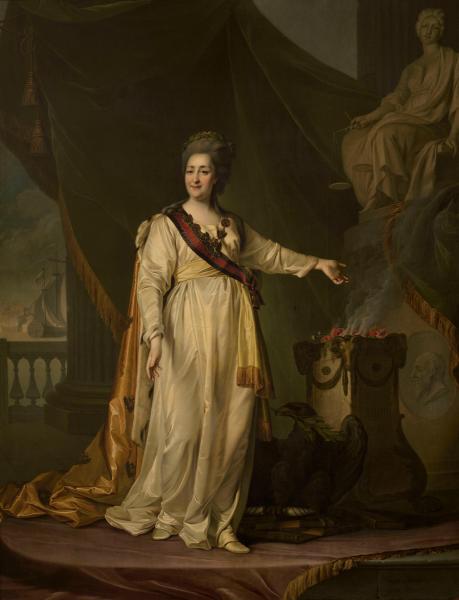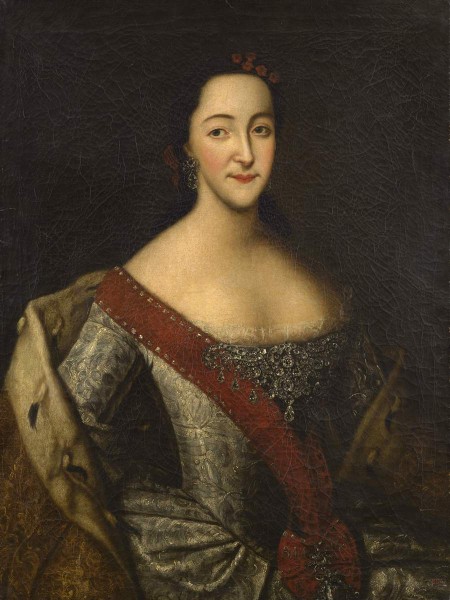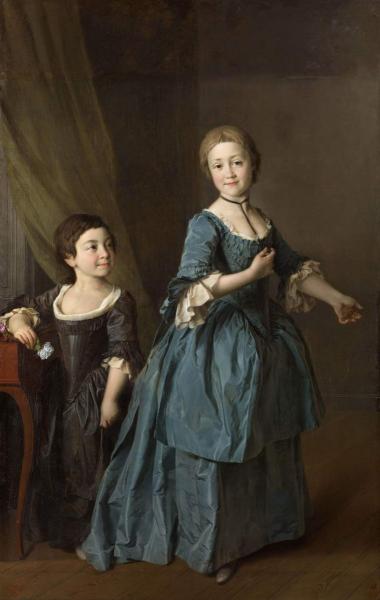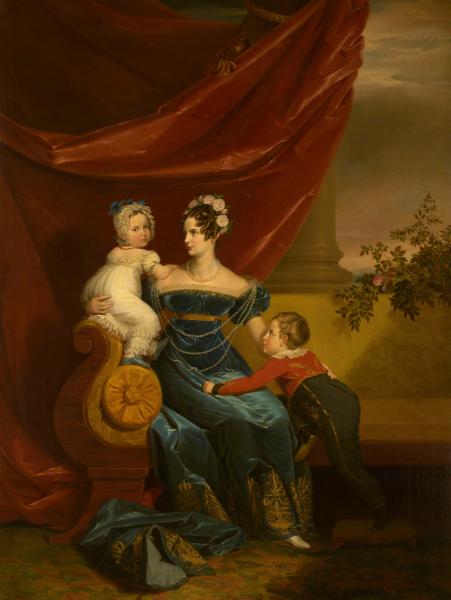The artist is Levitsky

Ekaterina II (Great; 1729–1796)-nee Princess Sofia Augustus Frederick the Angalt-Tserbst. Born in the German city of Stetin. In 1744, she arrived in Russia as the bride of Grand Duke Peter Fedorovich, the future Emperor Peter III. In the same year she accepted Orthodoxy with the name of Ekaterina Alekseevna and was married to Peter Fedorovich in August 1745. In 1754 she gave birth to an heir, future emperor Paul I. She did not work out with her husband, and Peter III intended to send his wife to the monastery. In the summer of 1762 she headed the guards and overthrew Peter III, becoming an empress. In the early years of government, it adhered to politics "enlightened absolutism", But after the peasant war, led by Emelyan Pugachev (1773–1775) and the great French bourgeois revolution (1789), she was forced to tighten the regime. Woned the victorious wars with Turkey (1768–1774; 1787–1792) and Sweden (1788–1790). During its reign, Russia included Crimea (1783), North Black Sea region, Baltic states, eastern parts of Poland, Aleutian Islands, Russian settlements in Alaska were created, Eastern Georgia was taken under patronage. The prestige of Russia in Europe has grown many times.
Olga Savenkova. Exhibition catalog in Malaga "The Romanov dynasty". 2017. With. 229.
The initiator of writing the ceremonial portrait of Catherine II was a famous poet, architect and musician n. AND. Lviv. The content of the picture is revealed through an entire allegory system. Catherine is depicted in the temple of the goddess of justice – Themis. The empress burns poppies on the altar, which, according to the ancient tradition, were considered a symbol of sleep and peace, thereby expressing their readiness to sacrifice their own peace for Russia’s prosperity. The Order of St. Vladimir emphasizes the merits to the Fatherland. At the feet of Catherine – books (a set of state laws) and an eagle with an olive branch in the beak, personifying the enlightened, strong and peaceful Russia. The picture reflected the ideas of the noble intelligentsia about the ideal monarch.
How to understand the ceremonial portrait of the XVIII century – material from the Arzamas project.


